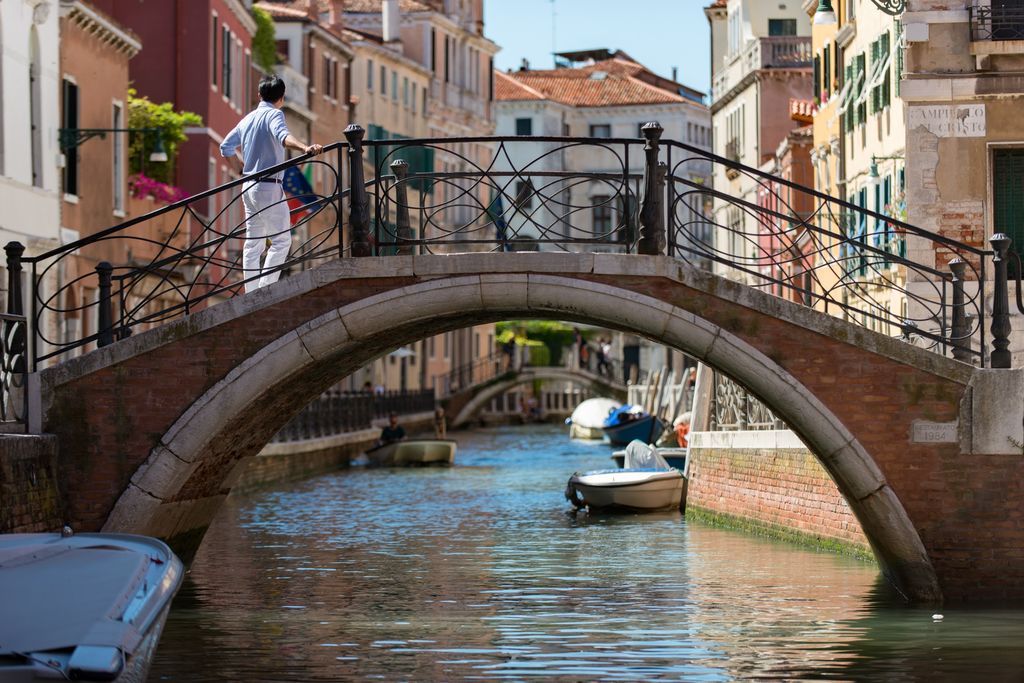
April 1 is known as April Fools’ Day in many countries across the world, from Japan to Brazil. It’s simply a bit of fun to most but in many places certain traditions have emerged that define it for that country. If you like a practical joke, then perhaps you’d like to take a holiday to Odessa, Ukraine, where a whole festival is held around April Fools’ Day? Otherwise, simply soak up the quirky traditions that a variety of cultures perform on or around this date.
It’s difficult to pinpoint how or where April Fools’ Day began. There are several theories, many of which seem plausible and all pointing to Europe as the place where the day took on this funny meaning.
Origins in Poetry or Fishing?
The earliest possible known reference to April 1 and playing a prank is in Geoffrey Chaucer’s “The Canterbury Tales”, written in the late 14th century. In the poem, a vain hen is tricked by a fox on “syn March bigan thritty dayes and two”. Readers took this as March 32, which would mean April 1. However, scholars have argued that Chaucer states the sun is “in the signe of Taurus” for the events, which could mean it was 32 days after March.
Over one hundred years later, French poet Eloy D’Amerval referred to “poisson d’avril” in 1508, the name which the French call their April Fools’ Day and some suggest that he may be recounting the events of the day.
Concrete accounts about April Fools’ Day emerged from France and Holland around this time, indicating that it may have been a northern European tradition that spread through the Celts. The fishing season began on April 1, but if a fisherman hadn’t brought back a great catch that day, sometimes they lied about how much they had caught. If they were found out, they were the fool.
While we may not know where it originates, it is certainly celebrated in many places now. It is a time that even the national media like to prank their citizens, so before calling “fake news”, remember it’s just a bit of fun!
For the jokers among you, we’ve collected some facts and fun pranks from around the world for this April Fools’ Day.
France

Paris-France
The French shout “poisson d’avril” for April Fools’ Day. Children draw and make paper fish at school, and people stick them to each other’s backs for fun. If you stop by any patisserie, you’ll find fish-shaped treats to tempt you.
The French media love to catch the unsuspecting public out with their own April Fools’ jokes. In 1986, Le Parisien newspaper ran a story about moving the Eiffel Tower to the site of the new Disneyland Paris. They added credibility to the story by saying that a new Olympic stadium would be built on the site that the iron masterpiece had left.
Last year, when the coronavirus pandemic had much of Europe under full lockdown, there were many news articles about nature reclaiming the streets. So, the Twitter team for the town of Beaulieu-sur-Mer had a little fun by posting some giraffes who were apparently roaming the streets of their town.
Embrace the French joie-de-vivre on Luxury Gold’s French Vogue tour.
Italy

Venice- Italy
Despite sharing a 515-kilometer border, the Italians and French have distinct traditions belonging to each country. However, the Italian name for April Fools’ Day is similar – Pesce d’Aprile. In Italy, the most common prank is taping a paper fish to someone’s back, the same as in France. The Italians make a game of it, where everyone in the room is asked who has seen the Pesce d’Aprile? Of course it takes some time for the person wearing the fish to realise!
There are some superb examples of the Italian media playing tricks on the public on April 1. In 1961, Milan’s “La Notte” newspaper reported that all horses would need to be fitted for signalling and brake lights for riding through the streets and surrounding countryside. Some people brought their horses to mechanics with the instructions to do so.
Join in the jokes on the Ultimate Italy tour in April next year.
Sweden

Sweden
If you’re visiting Sweden around April 1, then you should learn one phrase “April, april dun dumma sill, jag kan lura dig vart jag vill,”. It means “April, April, you silly herring, I can fool you anywhere I want to.” Whenever the person who has been pranked realizes the jokes on them, you must say this, or the April Fool is incomplete.
In 1965 an unknown prankster delivered leaflets throughout Stockholm claiming that the water company would soon switch off the water. Households were encouraged to fill up their bathtubs and as many containers as possible to store water. The culprit of this prank was never discovered. In 2004, a Swedish newspaper reported that mobile phone owners could access 3G simply by shaking their phones – that was probably funny to watch on the day.
England

London Guards
The one thing to remember on April Fools’ Day in England is that you must play the joke before noon, or else the joke is on you! Presumably this is to catch people out before they even realise the date.
The British media commonly take part in pranking on April Fools’ Day. In 1957, the broadcaster BBC brought in a special report about a record spaghetti crop in Switzerland, even showing Swiss workers pulling noodles from the trees.
The cutest April Fools’ joke came from Cambridgeshire police force, who introduced their drug sniffer bunny Benni to the world via Twitter.
Scotland

Just north of the border, the Scots used to have two days for playing jokes and pranks on friends and neighbors. April 1 was called Huntigowk day, where gowk meant foolish person. The gowk would be handed a sealed message to bring to someone, that read “Dinna laugh, dinna smile, hunt the gowk another mile.” On receiving the message, the recipient would tell the gowk to deliver another sealed message to someone else, which read the same. This would continue until the gowk realised there was no message at all and he had been tricked. April 2 was a continuation of festivities called Tailie day, where tails would be pinned on people’s backs. The “kick me” that you stick to someone’s back can be traced back to Tailie day.
Discover the great wit of British noblemen on the British Royale tour.
India

April Fools’ Day has been around for centuries in India, as a result of British influence. It has always been known as a day for light hearted joking, where children were allowed play small pranks without getting into trouble for them. These included things like replacing sugar with salt for tea or cooking, causing frustration to their parents.
More recently, the younger generations now post pranks on social media, such as making up silly news stories or trying to catch out their friends with jokes. It is not as widely celebrated as elsewhere, but many children enjoy the fun of the day.
Ukraine, especially Odessa
If your favorite day of the year is April Fools’ Day, then it’s worth putting a trip to Odessa to coincide with April 1 on your travel list.
Since 1973, Odessa has held the festival of Humorina around April Fools’ Day. A large parade takes place in the city center with comedians, musicians and clowns putting on performances. People dress in costume to join the parade and plentiful pranks are a given. It’s a joyous event organized by comic troupe, “Masks” who used to have a popular TV show in the country.
The city’s main buildings and monuments are often dressed in funny clothing to mark the event.
Russia

Russian’s love to have fun on April Fools’ Day. People dream up ways to trick their friends and family, from calling up their neighbors to tell them that their car is being towed (and getting the instant reward of seeing them run outside to check) to swapping their co-worker’s desk family photo for a movie still, and wondering when they’ll notice.
Learn more Russian jokes on the Remarkable Russia tour in 2022.
Greece

Cyclades – Greece
The Greeks believe that there is good luck to be had from pranking people on April Fools’ Day. They believe that if you successfully play a trick on someone, that it will bring you good luck for the rest of the year. Farmers believe that a couple of good pranks will bring a bountiful harvest that year, so plenty of neighborly joking occurs on April 1.
Another belief in Greece is that any rain that falls on April 1 has healing properties, so it’s the ideal time to dance in the rain.
Brazil

Rio de Janeiro – Brazil
In Brazil, April 1 is called “o dia das mentires”, meaning “day of lies”, so white lies are commonly told, with no harm meant. It has been celebrated in the country since 1828, when a satirical paper called A Mentira announced that the emperor and founder of Brazil, Don Pedro, had died. This could have been taken quite seriously, but Brazilians that believed it weren’t angry when they discovered the truth. They like to make light of things, because they believe it’s the solution to the ills of modern life. So, take anything you hear in Brazil on April 1 with a pinch of salt, in the spirit that it’s meant.
Embrace the belief of Brazilians on the Classic South America tour with Luxury Gold.
Discover how countries around the world celebrate April Fools’ Day on a worldwide holiday.











Leave a Comment